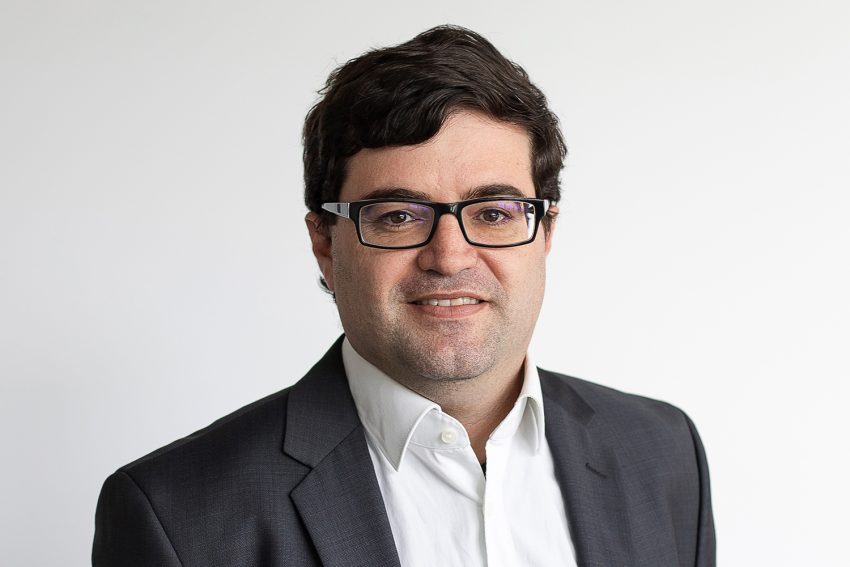Coffee, crisps and online teaching Guillermo Payá Vayá starts as Professor for Chip Design for Embedded Computing
On 1 April, Guillermo Payá Vayá took up the Chair for Chip Design for Embedded Computing. As part of the Institute of Theoretical Computer Science, he is researching complex hardware for autonomous vehicles and hearing aids, for example. In this interview, Professor Payá Vayá talks about his start at TU Braunschweig and what excites him about computer chips.
Have you arrived well at TU Braunschweig?
I quickly settled in. As I come from Hanover and Braunschweig is close by, the transition was easy. Unfortunately, I wasn’t able to get to know my new colleagues and students in person due to COVID-19. Nevertheless, my colleagues welcomed me warmly through various video conferences and I already feel well integrated. The atmosphere at the Carl-Friedrich-Gauß Faculty is also very good and allows for great collaboration between the institutes.
What exactly do you deal with in your research?
Every year, the demand for increasingly complex hardware systems increases in a wide range of areas. There are several contrasting extremes in the demands placed on these systems: There are the high computational demands of AI systems, such as those required by autonomous vehicles. Or the need for extremely low-power hardware, such as in medical implants. You can only deal with these extremes by using hardware that is tailored to the application. My research focuses on the specialisation of processor architectures. The aim is to achieve high efficiency for such applications while maintaining a high degree of flexibility in terms of programmability.
Which research areas and projects will you be working on at TU Braunschweig?
Among other things, TU Braunschweig is focusing on the field of mobility. I see great potential here for future cooperation with research and industry in my department. My research focuses on application-specific processors in embedded systems, which can of course also be implemented in the form of a chip. One example is autonomous driving, which relies on a large number of sensors, a lot of information processing and AI; another example is extremely low-power processors in medical technology, such as for hearing aids. In the future, we also plan to continue research into application-specific processors and take them all the way through to production.
What motivated you to do research in this area?
I have been fascinated by hardware design and robotics in general since I was a child. Specifically, I have always wondered how these systems are programmed and how the processors are constructed. During my studies, I then focussed on how to implement these processors even more efficiently. I then deepened this in my doctorate.
What role does science communication play in your work?
I firmly believe that science should be transparent about its work. That is why I am in favour of the trend to publish some of the scientific advances as open source projects. I see great potential in this to advance research through collective collaboration in the open source community.
What does your day-to-day work look like in three key words?
Coffee, discussions, teaching.
What has been your favourite experience as a scientist?
As an assistant professor, I had the opportunity to work in the Hearing4All Cluster of Excellence. There we developed a hearing aid processor from concept to finished chip. The finished chip was used as a demonstrator. The best experience was the moment when you see all the research work in a finished chip that you can touch and try out. At the same time, however, you also realise that there are still many other possible improvements or alternatives that you can build on in your research.
Working, researching and teaching has changed since the coronavirus pandemic. What are the particular challenges you face?
In my teaching work, the change from classroom teaching to online teaching was actually a big challenge. Above all, I miss the direct communication and direct feedback from students. The challenge is to communicate successfully with students in other ways (chat, email and more). After all, I don’t just want to teach the students knowledge, I also want to get them excited about the subject.
In my experience, the use of online formats in research is unproblematic. Thanks to the possibility of fast and direct communication through online conferences, it is now much easier to communicate with project partners, but also with research associates. Unfortunately, research work in the labs suffers greatly from the contact restrictions.
What would you like to pass on to the students?
Online teaching can open up new possibilities for future teaching! Try to take an active part in online courses. The best teaching – whether online or in the classroom – needs the engagement of teachers and students.

